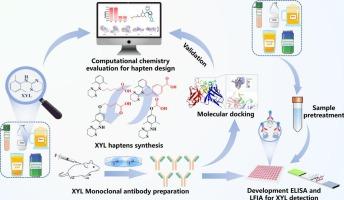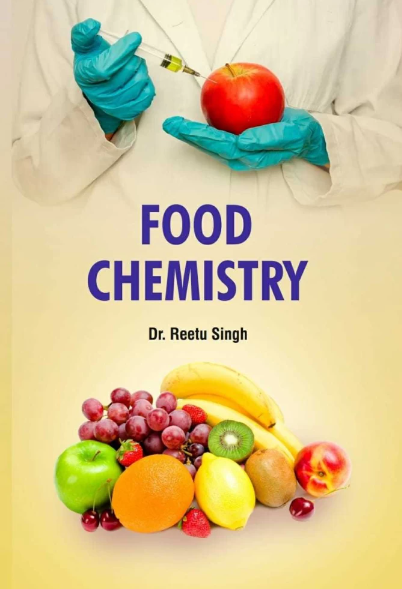Rational hapten design, antibody preparation, and immunoassay development for rapid screening xylazine in biological samples
IF 8.5
1区 农林科学
Q1 CHEMISTRY, APPLIED
引用次数: 0
Abstract
Xylazine (XYL) is an illicit adulterant in opioids and an approved veterinary sedative drug, which has been abused, misused, and residued in food samples, endangering people health, causing drug-facilitated crimes and even death. Immunoassay used antibody as core biomaterial could to achieve highly sensitive and rapid detection screening purpose for XYL in situ. Here, we rationally designed four novel XYL haptens with different spacer arms to produce antibodies with high affinity and specificity. Ten monoclonal antibodies (mAbs) were obtained and mAb 7H5 showed a high affinity with IC50 of 0.23 ng mL−1 and ignorable cross-reactivity for the other eight analogs. One highly sensitive indirect competitive ELISA (icELISA) and lateral flow immunoassay (LFIA) were established based on heterologous haptens for XYL detection in a series of human urine and food samples. The limit of detections (LODs) of the icELISA were 0.10–2.24 μg L−1 with recovery of 83.5 % to 128.6 % and CV below 15.8 % in different samples, while, the visual limits of detection (vLOD) of LFIA were 0.10–1.80 μg L−1 with the cut-off value of 0.60–4.80 μg L−1. In addition, the molecular recognition mechanism of mAbs was explored. The study provides powerful tools for rapid screening of XYL in human urine and food samples for the first time.

用于快速筛查生物样本中甲苯噻嗪的合理合体设计、抗体制备和免疫测定开发
赛拉嗪(XYL)是阿片类药物中的一种非法掺假物,也是一种经批准的兽用镇静剂,曾被滥用、误用,并残留在食品样品中,危害人们的健康,引发毒品犯罪,甚至导致死亡。以抗体为核心生物材料的免疫测定可以达到原位高灵敏、快速检测筛选 XYL 的目的。在此,我们合理地设计了四种新型的 XYL 触媒,并通过不同的间隔臂来产生具有高亲和力和特异性的抗体。我们获得了 10 种单克隆抗体(mAb),其中 mAb 7H5 具有很高的亲和力,其 IC50 为 0.23 ng mL-1,并且与其他 8 种类似物的交叉反应不明显。基于异源抗原建立了一种高灵敏度的间接竞争性酶联免疫吸附法(icELISA)和侧流免疫吸附法(LFIA),用于检测一系列人体尿液和食物样品中的 XYL。icELISA的检测限(LOD)为0.10-2.24 μg L-1,回收率为83.5%-128.6%,不同样品的CV值低于15.8%;LFIA的视觉检测限(vLOD)为0.10-1.80 μg L-1,临界值为0.60-4.80 μg L-1。此外,还探讨了 mAbs 的分子识别机制。该研究首次为快速筛查人体尿液和食物样本中的 XYL 提供了强有力的工具。
本文章由计算机程序翻译,如有差异,请以英文原文为准。
求助全文
约1分钟内获得全文
求助全文
来源期刊

Food Chemistry
工程技术-食品科技
CiteScore
16.30
自引率
10.20%
发文量
3130
审稿时长
122 days
期刊介绍:
Food Chemistry publishes original research papers dealing with the advancement of the chemistry and biochemistry of foods or the analytical methods/ approach used. All papers should focus on the novelty of the research carried out.
 求助内容:
求助内容: 应助结果提醒方式:
应助结果提醒方式:


